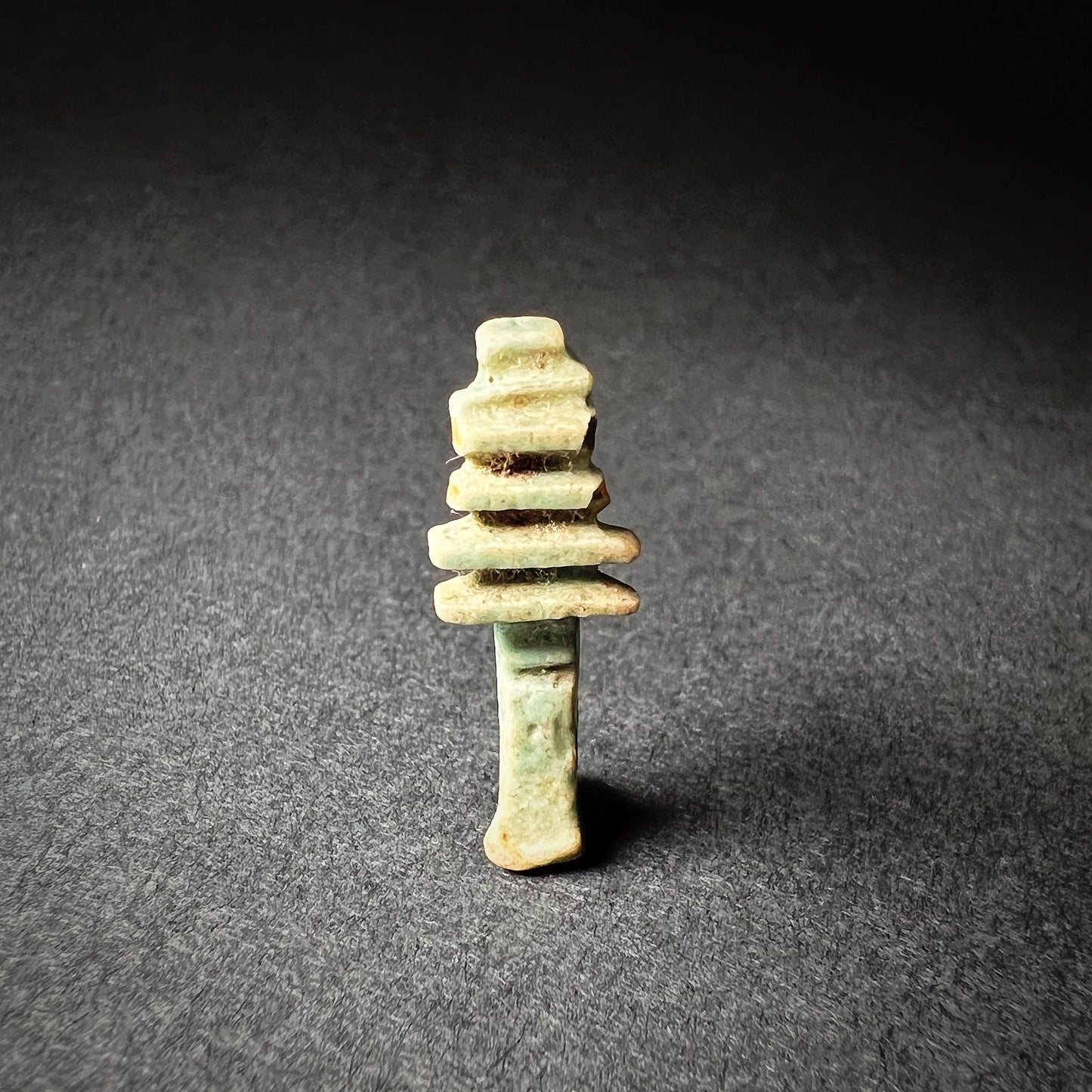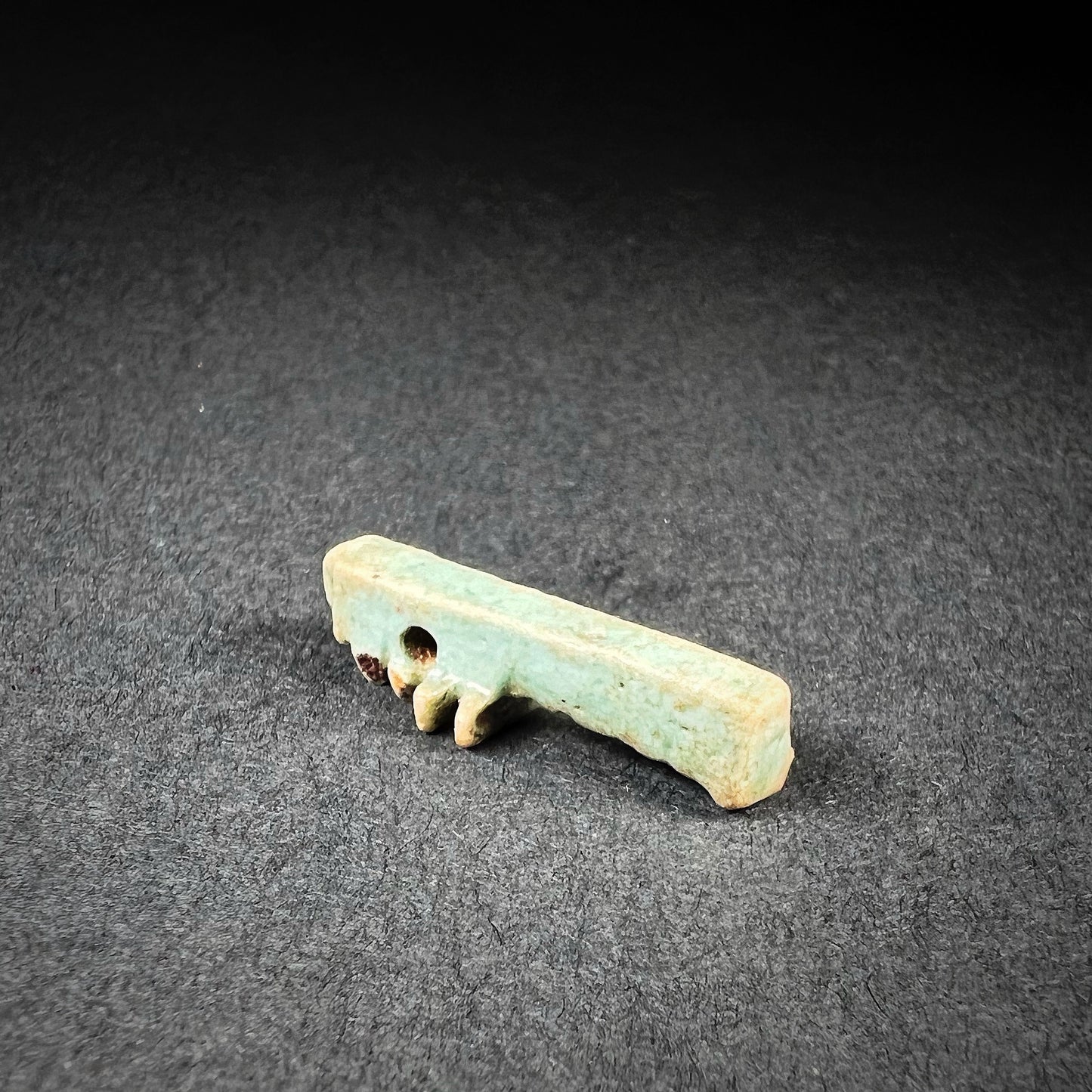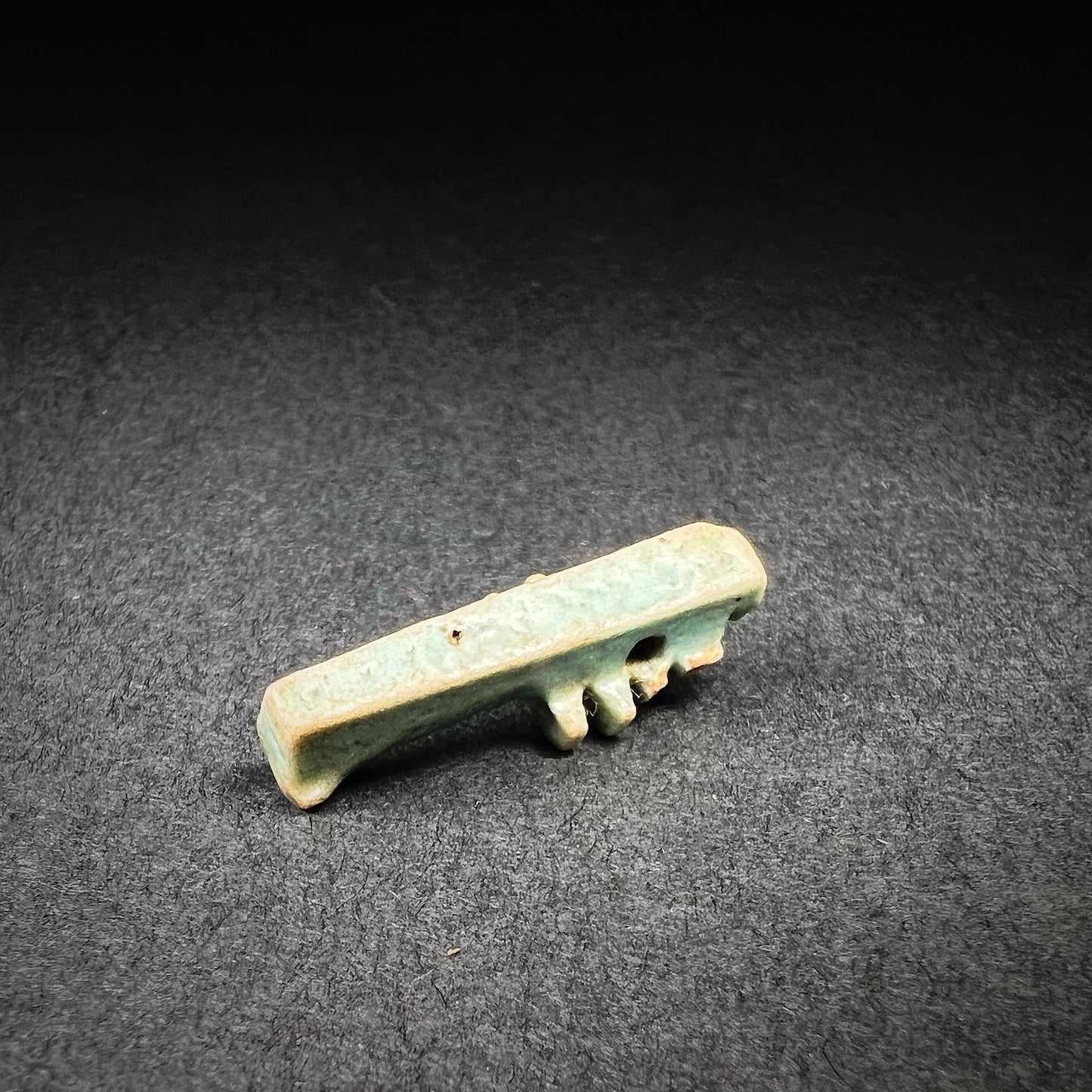Egyptian Faience Djed Pillar Amulet
Egyptian Faience Djed Pillar Amulet
Couldn't load pickup availability
Late Dynastic Period, 26th to 31st Dynasty, c. 730-332 BC, Egypt
This striking, turquoise-glazed faience amulet, shaped as a djed pillar, symbolizes the timeless ideals of permanence, strength, and stability in ancient Egyptian culture. With a small suspension hole through the top of the back pillar, this amulet could be worn or carried, allowing the bearer to benefit from its potent symbolism.
The djed pillar's origins likely trace back to fertility cults, where it may have represented a reed or grain pole, symbolizing abundance. Over time, the djed was closely associated with Osiris, the god of resurrection, transforming it into a representation of his backbone and a symbol of eternal life and regeneration. Commonly found near the spines of mummified bodies, these amulets were believed to protect and ensure the deceased's rebirth in the afterlife, granting them eternal existence.
Ancient Egyptian amulets were cherished for their magical properties, believed to protect, heal, and empower their owners. Accessible and abundantly produced, amulets like this one embodied the connection between material, shape, and color to bestow their blessings. Through miniature forms of animals, deities, symbols, and objects, Egyptian amulets offered a direct, tangible link to divine protection and magical energies.
Moderate condition. Chip. Age-related heavy wear and signs of use. A fine glaze with light encrustations. Size approx. 2,7cm x 0,9cm x 0,6m.
Provenance: Dutch private collection
For a similar examples see:
Djed pillar amulet, The Metropolitan Museum of Art, Accession Number: 10.130.1814 (https://www.metmuseum.org/art/collection/search/574168)
Djed Pillar Amulet, National Museums Liverpool, Accession Number: 49.8.16 (https://www.liverpoolmuseums.org.uk/artifact/djed-pillar-amulet-6)
References and further reading:
Amulets of Ancient Egypt, Carol Andrews, University of Texas Press, 1994. pp. 82-83.
Talismans & amulets, Felicitas H. Nelson, New York: Sterling, 2008, p. 25.
Ancient Egyptian Amulets, Isabel Stünkel, In Heilbrunn Timeline of Art History, New York: The Metropolitan Museum of Art, February 2019. (http://www.metmuseum.org/toah/hd/egam/hd_egam.htm)
Handbook of Egyptian mythology, Geraldine Pinch, Santa Barbara, Calif.: ABC-CLIO, 2002, p. 127.
Egypt in the New Kingdom (ca. 1550–1070 B.C.), Catharine H. Roehrig, In Heilbrunn Timeline of Art History, New York: The Metropolitan Museum of Art, October 2000. (http://www.metmuseum.org/toah/hd/nking/hd_nking.htm)



-
Shipping
The shipment will be prepared in the course of 3-5 days and dispatched via Posti Group Oyj or purchased item(s) can be picked up from our shop during the store's opening hours (Tarkk’ampujankatu 4, 00140, Helsinki, Finland). Within the Finland, all items are shipped via Posti Group Oyj unless otherwise requested. We pack the items carefully and mainly in recycled materials because we want to save nature. You will receive the tracking number for your items by e-mail.
-
Returns
Returns and exchange will be accepted within fourteen days (14) of receipt at the purchaser’s cost to include freight and packaging. Items must be returned in the same condition as when they were shipped, and will not be accepted if damaged or altered in any way. Please inform us via email (info@gotanmaailma.fi) or by calling +358408408352 before sending. We do not accept returns more than 14 days after delivery.



